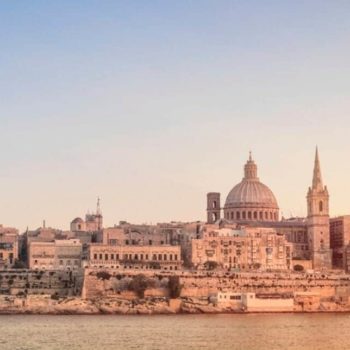Valletta is Malta’s capital city and is one of Europe’s smallest capital cities, as well as one of the youngest, having been founded a little over 450 years ago. It was built by the Order of St. John on a peninsula between two natural harbours (Grand Harbour and Marsamxett Harbour), and named after the Grandmaster at the time – Jean de La Vallette.
History
The Knights strategically chose Valletta’s location for its highly defensible position. So they used it to fortify Malta as a stronghold for Roman Catholicism. That being said, Valletta has very strong roots in Malta’s long and complex history. Interestingly, as opposed to most towns and cities in Malta who went through an ancient evolutionary process and changed over the centuries, Valletta was one of the first European cities to be constructed on an entirely new site. In fact, when thinking of visiting a place such as this, it is wise to read up on the city of Valletta to get a good context of what you are really walking into.
As you can imagine, being that Valletta is the capital city of Malta, despite its small size, it is packed with a large variety of sites of great historical significance, with buildings dating back to the 16th century. In fact, it is safe to say that most of the historical landmarks exist predominantly in the capital, Valletta. So much so that the city of Valletta as a whole has been an officially listed UNESCO World Heritage site since 1980 for its historical and cultural value.
This makes this city the ideal place for any history buffs out there who really want to make the most of their holiday. In fact, a holiday in Malta would be great for those history buffs. We shall elaborate on a number of these famous historical sites below, making special emphasis on some of our favourite forts one should visit.
Fort St. Elmo
Constructed by the Order of St John in 1552, Fort St. Elmo is a famous star-shaped fort which was built very much in line with the most cutting edge of fortress design at the time.
The fort played a crucial role in the Great Siege of 1565 as it was a war machine of a fort which was built in a strategically important location set to go up against the Ottoman attacks.
This position now offers some great unobstructed panoramic views of the harbours and the surrounding towns and villages as well as experiencing its impressive grounds which include the spectacular architecture of the two chapels dedicated to St Anne.
Fort St. Angelo
For the past thousand years, Fort St. Angelo has been the fortress with the greatest potential of shaping Malta’s destiny. This is no surprise because it was widely known that whoever controlled this fort, essentially controlled the entirety of the Maltese Islands. This is because, being that it is strategically located on a hill at the end of the Birgu peninsula, this fort dominates the Grand Harbour. Hence, in the 1500s, the Order of St John named this military structure Fort St Angelo and turned it into their headquarters. When constructing this fort, the Knights remodelled the building and decided on the construction of a series of artillery platforms which brought about the introduction of the bastioned system of defence into the Maltese Islands.
Similar to the great city of Valletta, 1926 La Galerie was very heavily inspired by La Vallette. So take this opportunity to take advantage of our wide range of stunning facilities. Contact us on [email protected] to book or for more information.

